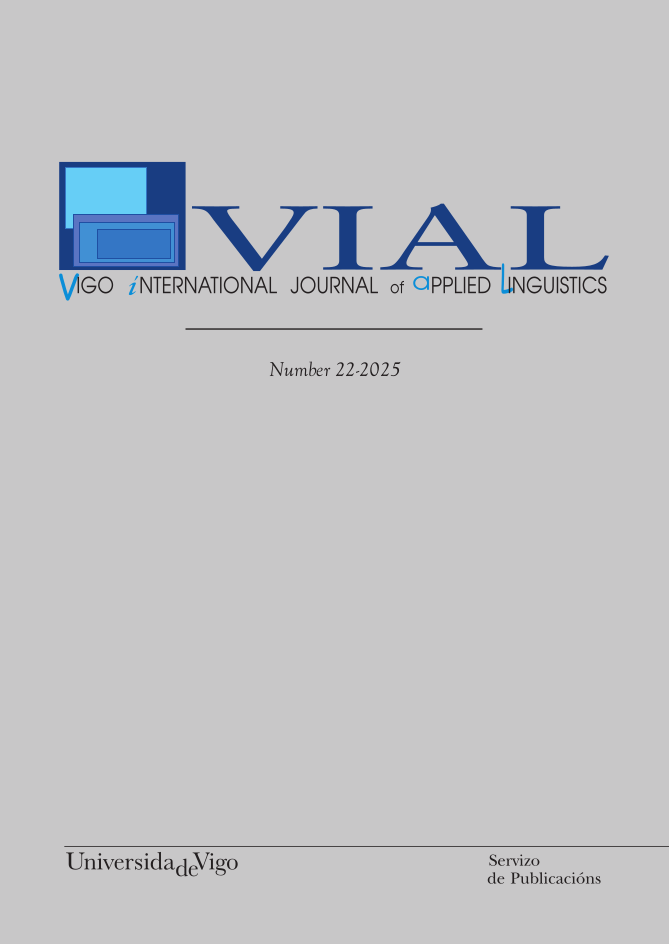What shapes communicative adequacy in second language speaking performance? The contributions of complexity, accuracy, fluency, and pronunciation
DOI:
https://doi.org/10.35869/vial.v0i22.4882Keywords:
communicative adequacy, complexity, accuracy, fluency, pronunciationAbstract
The necessity of considering communicative adequacy (CA) in assessing second language (L2) performance has been increasingly recognized, while its nature has yet to be fully explored. The present study examines the relationship between CA and the dimensions of complexity, accuracy, fluency, and pronunciation (CAFP) in L2 speaking assessment. Specifically, the speaking performance of 158 Chinese learners of English was subjectively rated in terms of CA and was also subjectively rated and objectively measured in CAFP. The relationship between the subjective ratings of CA and CAFP and the relationship between the subjective ratings of CA and CAFP and the objective measures of CAFP were analyzed. Results show that the subjective ratings of all CAFP dimensions were significantly correlated with and predicted CA, with pronunciation and fluency ratings making relatively greater contributions to CA than complexity and accuracy ratings, while only the objective measures of verbal complexity, speed fluency, and pronunciation significantly correlated with CA, together accounting for 45% of CA’s variance. Furthermore, the subjective ratings of CAFP showed limited correlations with their objective measures. Discussions were made concerning the validity of the construct of CA, the relative contributions of CAFP to CA, and the important role of pronunciation in L2 speaking assessment.
Downloads
Downloads
Published
Issue
Section
License
Revistas_UVigo es el portal de publicación en acceso abierto de las revistas de la Universidade de Vigo. La puesta a disposición y comunicación pública de las obras en el portal se efectúa bajo licencias Creative Commons (CC).
Para cuestiones de responsabilidades, propiedad intelectual y protección de datos consulte el aviso legal de la Universidade de Vigo.



